Building of the Day: 1352 Prospect Place, a Hidden Mystery
Brooklyn, one building at a time. Name: Private house Address: 1352 Prospect Place Cross Streets: Schenectady and Utica avenues Neighborhood: Crown Heights North/Weeksville Year Built: Unknown Architectural Style: Italianate Architect: Unknown Landmarked: No The story: Eastern Crown Heights is an interesting neighborhood. The blocks that surround the avenues that were named after cities in upstate…
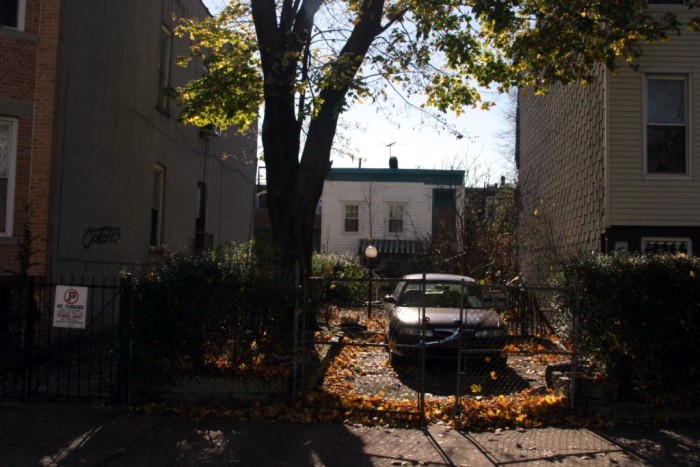

Brooklyn, one building at a time.
Name: Private house
Address: 1352 Prospect Place
Cross Streets: Schenectady and Utica avenues
Neighborhood: Crown Heights North/Weeksville
Year Built: Unknown
Architectural Style: Italianate
Architect: Unknown
Landmarked: No
The story: Eastern Crown Heights is an interesting neighborhood. The blocks that surround the avenues that were named after cities in upstate New York have not really been on anyone’s radar – ever. At least, not until recently, when the search for an affordable row house has taken people to places they would never have thought of venturing before.
Not too many people ventured here for a very long time. This was the 9th Ward, practically the eastern end of Brooklyn, and much of it was farmland and undeveloped property until the very end of the 19th century. This was also considered to be Weeksville.
Only a few blocks from here, James Weeks and a group of African American Brooklynites founded a town called Weeksville in 1838. It was a place where black people could be free build their homes and walk their streets unquestioned. They opened and operate businesses, schools, churches and charitable organizations, all free of the ingrained prejudices and restrictions all too present in mid-19th century Brooklyn.
Today’s Weeksville Heritage Center has preserved the last remaining group of these houses, and a rich cultural center has been built up around it. But people forget that Weeksville was not just one block of houses. It was a town, and its informal boundaries stretched out in all directions for a number of blocks.
One of its best known institutions, the Howard Colored Orphan’s Home, was on the corner of Dean Street and Troy Avenue, four long city blocks from the present day Hunterfly Road houses. Our BOTD is right in the middle of the area that made up the town.
If you look at the 1888 maps of the 9th Ward, you can clearly see that development had not yet reached Weeksville, and therefore had not destroyed it. The street grid had been mapped out, but streets had not necessarily been opened. Therefore you find several small wood framed houses throughout the area sitting in the middle of lot lines, and more than one sitting in what would become the middle of a street.
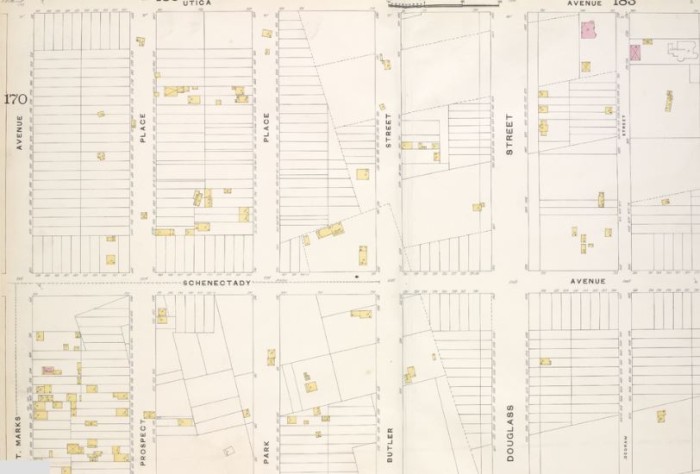
The lot sizes are very uneven, not perpendicular or parallel with the grid, indicative of a city mapping out an area that was still quite rural and isolated. Almost all of the existing buildings are wood-framed, most with surrounding plots large enough for a family to garden or raise small animals.
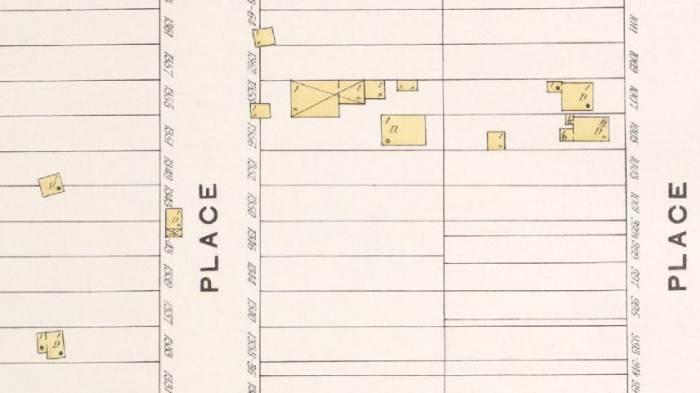
The 1888 map also shows that 1352 Prospect Place had not yet been built. It was constructed sometime between 1888 and 1904, the next year a Crown Heights map is available in the NYPL collection. Unless it is the house shown next door, and the numbers were rearranged. It is possible, as we see here.
Andrew Gilligan, who lived here in 1887, according to the Brooklyn Eagle, was drunk when he threw a broom at a trolley conductor. He was found to have an empty revolver on him, as well, as was arrested. His address gives rise to the question as to whether or not the set-back house in the 1888 map is this one. Hmmm.
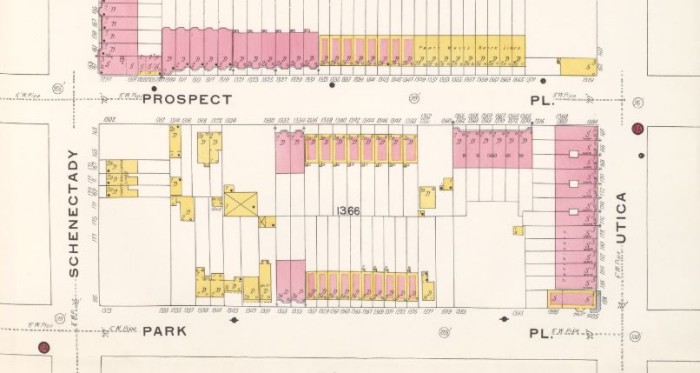
By 1904, development was going full guns in this area. This later map shows tidy rows of wood-framed and masonry row houses. Not every street is complete, but the rural aspect of Eastern Crown Heights is already gone. Brooklyn’s urban development had finally reached Weeksville.
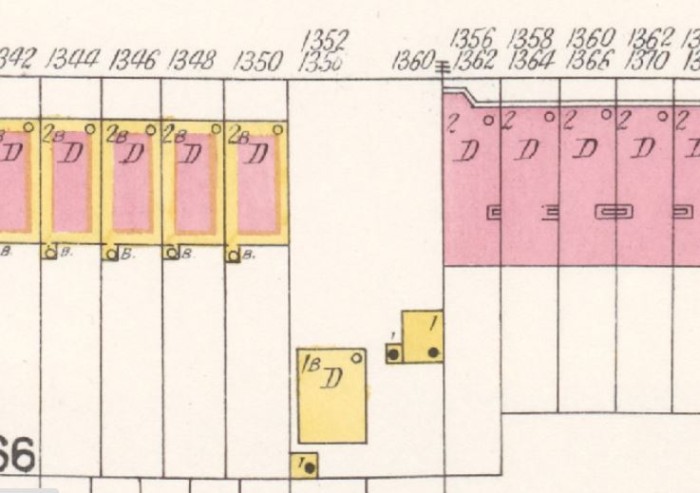
The town disappeared into the street grid until rediscovered in 1968 by James Hurley and Joseph Haines. They were flying over Brooklyn looking for this legendary black town they had read about, and found the oddly placed Hunterfly Road houses amidst the rest of the streetscape.

Like other odd little homes scattered in different neighborhoods, this one is a survivor. Why is it set so far back from the street? We don’t know. It also once had two other little outbuildings on a double lot.
It’s a cute little Italianate house, unfortunately hard to see well in photos. The lot is nice big 25 by 127.5 feet. The house is small, only 20 by 30 feet. Amazingly, there are two units listed.
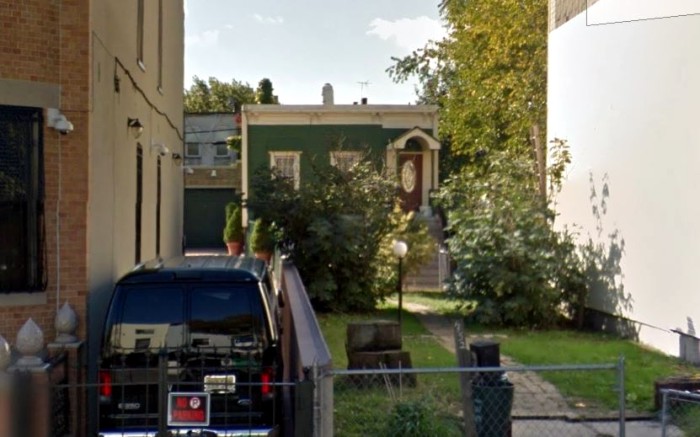
There are few mentions of this address anywhere. The people living here were not wealthy, far from it, and one advertised to take in washing, a hard job that did not pay well, especially in 1909. But it was honest work.

It will be interesting to find out more about the area. Who knows what other mysteries are found on its streets?



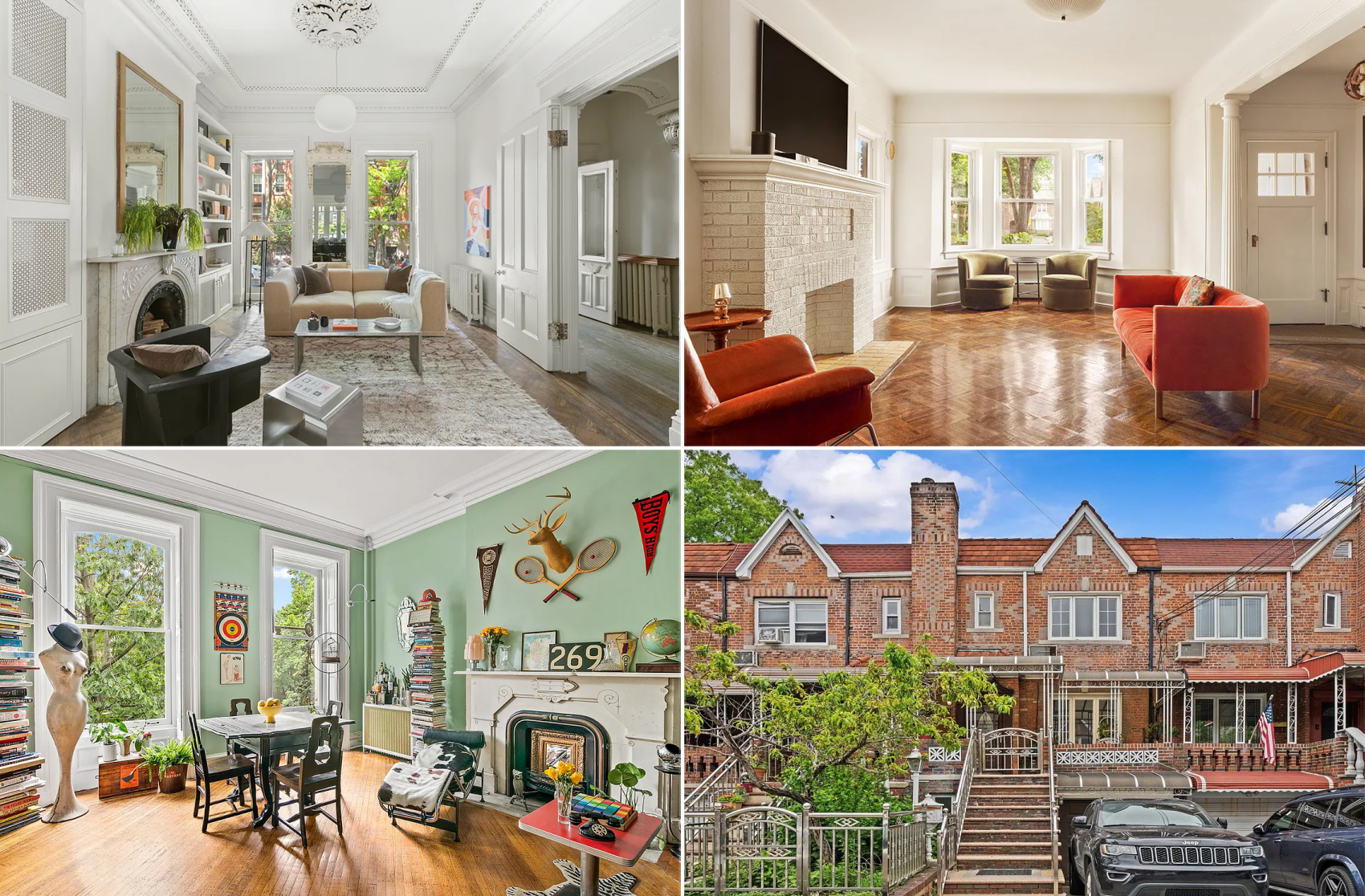

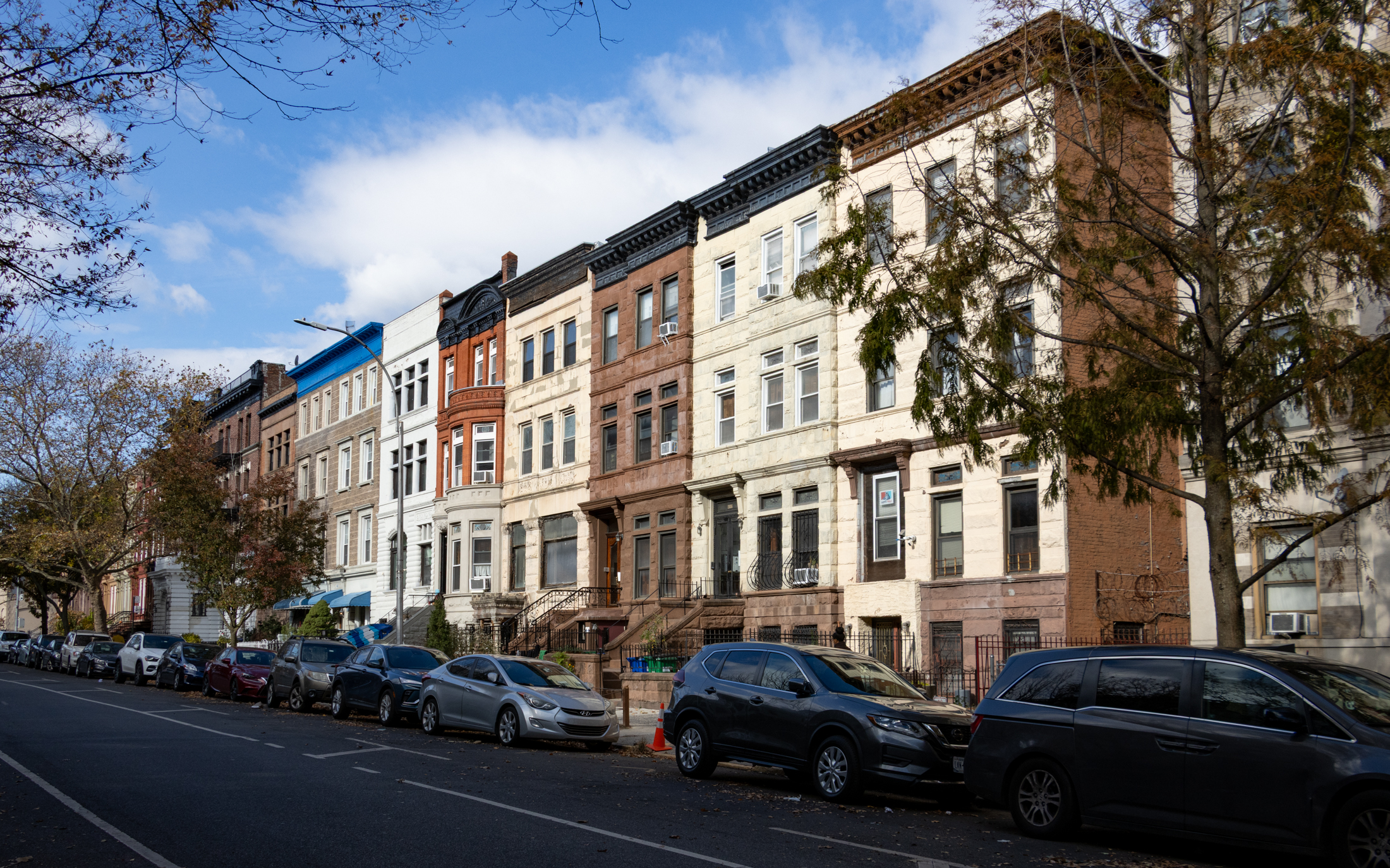
the history of weeksville has always fascinated me! thank you for this.